How To Know if Your iPad, iPhone Supports HDR: A Complete Guide
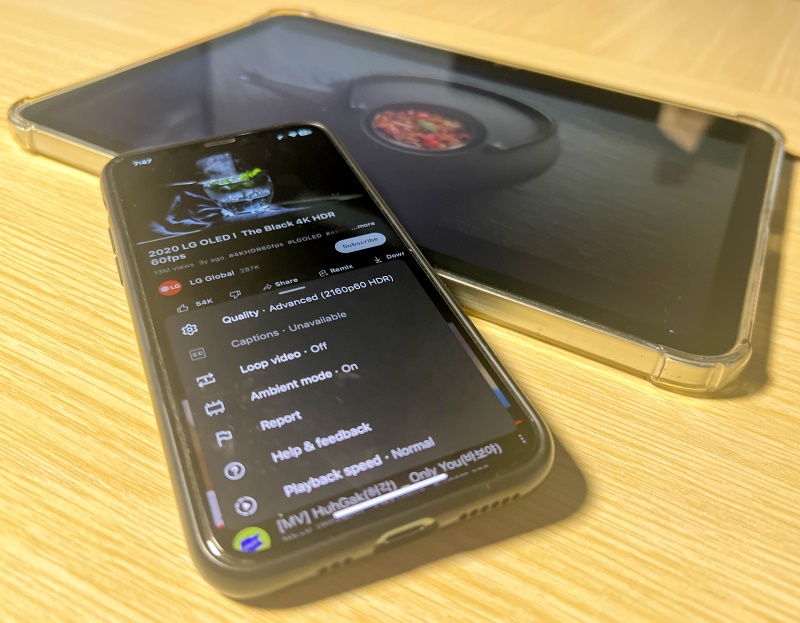
What To Know
- HDR compatibility varies among iPads and iPhones; for instance, the 12.9-inch iPad Pro (5th gen and later) fully supports HDR, whereas iPhones support HDR displays starting from the iPhone X.
- To check for HDR support, refer to Apple’s specifications or test with an HDR video on YouTube; the presence of an HDR option confirms compatibility.
- HDR photo and video features are model-dependent, with newer iPads and iPhones offering more robust HDR capabilities and settings control.
In this guide, I will show you how to check whether your iPad or iPhone supports the HDR feature and how to use it properly on your device.
Let’s get started!
Quick Navigation
How to Check Whether Your iPad/iPhone Supports HDR
Watching HDR content on a non-HDR screen is akin to viewing a 4K video on a 1080p display. The non-HDR panel will play the HDR content but not as actual HDR.
To check if your iPhone or iPad’s display is HDR, head to the product’s specifications page on Apple’s official website. There is another veritable testing method. Read on to find out.
iPad
Currently, the 12.9-inch iPad Pro (5th generation or later) can display HDR content, thanks to its Liquid Retina XDR display. That display can manage up to 1,600 nits of peak brightness and a maximum of 1,000 nits for the whole screen.
Besides letting users watch content in proper HDR, the device also allows shooting, editing, exporting, and uploading content in HDR.
On the other hand, the entry-level 10th-gen iPad with a Liquid Retina display doesn’t support HDR. The two devices were released together on October 26, 2022.
The other iPads support only clicking photos in HDR and not playing true HDR content-more on iPads supporting HDR for capturing pictures later in the article.
If your iPad supports HDR, it will be enabled automatically each time you watch an HDR video. You cannot turn it off in the setting.
To check whether your Apple tablet supports playing HDR content, play the below YouTube video on the device:
If the video quality section shows the HDR option, the iPad supports HDR. If not, then it doesn’t.
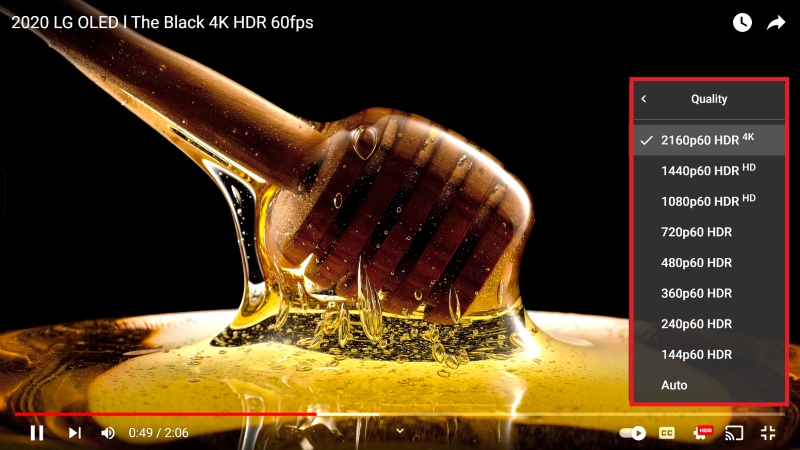
Not all 2K or even 4K videos on YouTube are encoded in HDR. So, even if your iPad is HDR-compatible, the HDR option won’t show if you play another or a non-HDR 4K video, emphasizing the importance of source content.
iPhone
Regarding iPhones, Apple phones, right from the iPhone X, support HDR. The iPhone 8 and iPhone 8 Plus phones released alongside the X do not support HDR media consumption natively.
Here is a list of iPhones with an HDR display:
To check whether your iPhone has an HDR display, play the same 2020 LG OLED video from above. If the video quality section shows the HDR option, you’re good. If not, you know what it means.
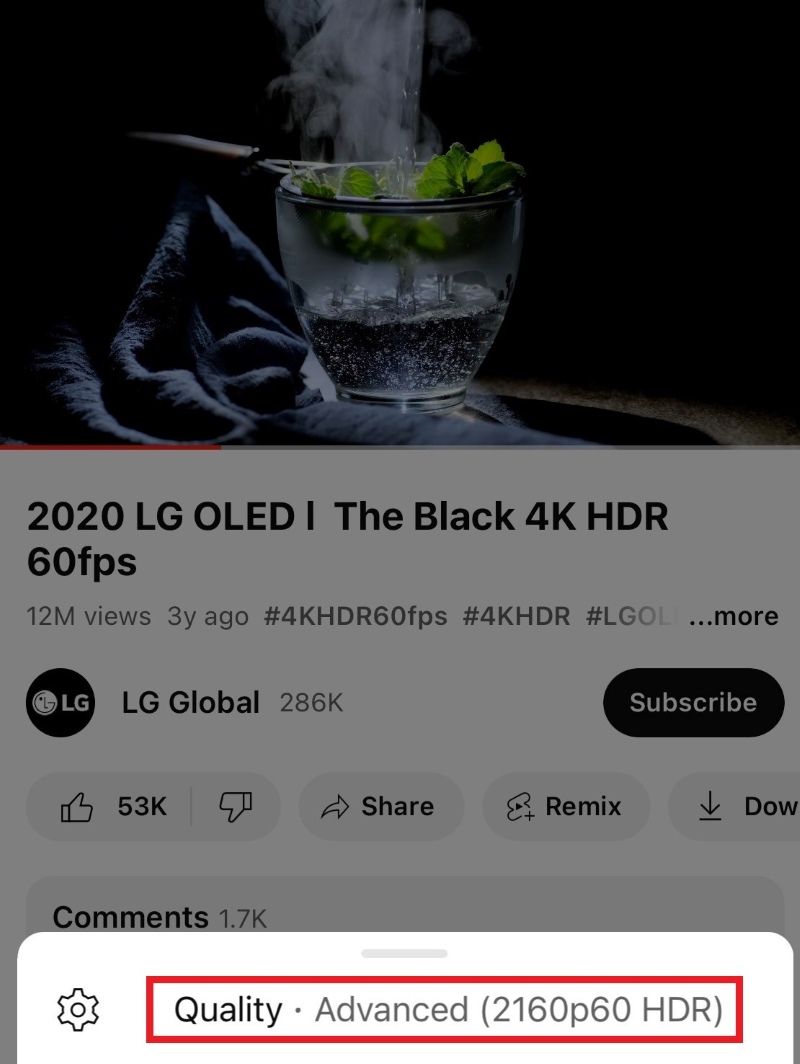
The iPhone XR, which tagged along with the iPhone XS/XS Max, didn’t have an HDR display despite the more premium phones released simultaneously sporting one.
Starting with the iPhone 12, all iPhones in the number series have packed in an HDR display, including the “mini” devices.
HDR Compatibility Meaning
If your iPhone or iPad supports HDR, it could mean the device allows recording videos in HDR or watching video content in HDR, or both.
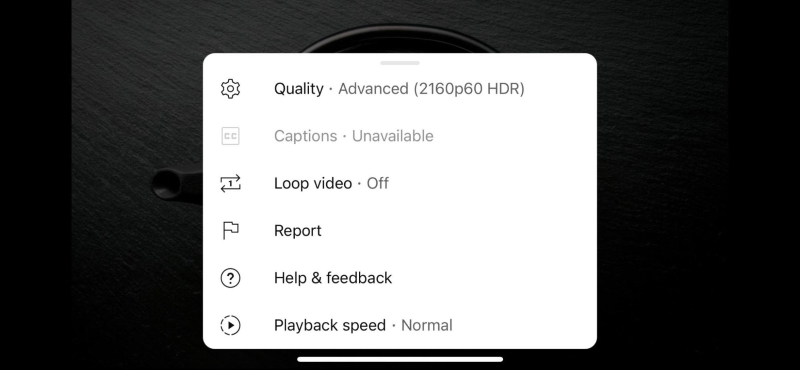
The ability to view HDR content means the display can reproduce a broad array of hues and strike increased contrast between dark and bright areas. The visually striking and realistic viewing experience applies to videos, photos, etc.
Being able to record videos or take pictures in HDR means the device’s camera hardware and software work synergistically to capture a greater dynamic range of color and light information.
When an iPhone or iPad is marketed as HDR-friendly, it usually means you can watch HDR content on it in the truest sense, and the ability to click and record in HDR usually tags along too.
Requirements to Watch HDR Contents on Your iPad/iPhone
To watch true HDR content on your iPad or iPhone, ensure the device meets the following criteria:
1. The display should support HDR natively. Otherwise, it will play a standard or toned-down version of the HDR content.
2. The movie, TV show, or source content must also be HDR. An HDR screen will not automatically convert an SDR (standard dynamic range) content into HDR. Check out this YouTube channel for a healthy collection of HDR videos for your viewing pleasure. To watch Netflix in HDR, ensure you meet these requirements.
3. If you’re watching HDR content online, you’ll need a stable internet condition with a fairly high average speed. A 1 or 2 Mbps connection will not cut it. To watch Netflix in HDR, for instance, ensure a bandwidth of at least 15 Mbps. Expect the speed requirements for other platforms in the same ballpark.
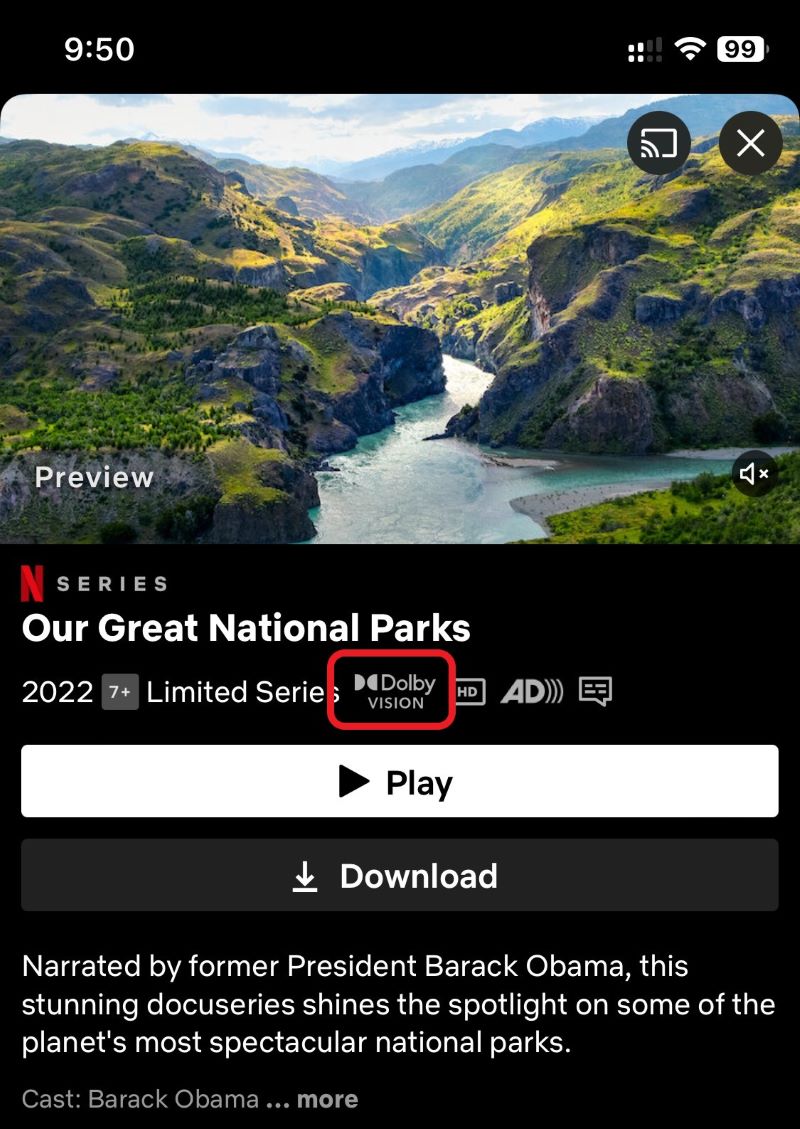
HDR streaming requires a relatively speedier internet due to its greater data needs. Increased detail, more color data, and contrast all account for the augmented bandwidth requirement.
How to Take HDR Photos on Your iPad/iPhone
Not all iPads and iPhones let you snap in HDR. In other words, not all have camera hardware and complementing software that can capture multiple pictures quickly, each with a different exposure level.
The clicked images are merged to concoct a final picture with enriched shadows and highlights. The end result is a dynamic and more balanced-looking picture.
Note that HDR may sometimes be automatically disabled in your iPad or iPhone’s camera settings. Launching the camera app may not turn on HDR by default.
If there’s no option to turn on or off HDR in the camera, the device most likely doesn’t support HDR photos.
iPhone
By default, your iPhone camera turns on HDR after you open the HDR-enabled camera.
Some iPhones could let you manually control HDR. If your iPhone does, you can check the same.
If you have an iPhone XS/XR, iPhone 11 (Pro/Pro Max), 2nd-gen iPhone SE, or iPhone 12 (12 Pro/Pro Max), follow these steps:
Step 1: Head to Settings.
Step 2: Choose Camera.
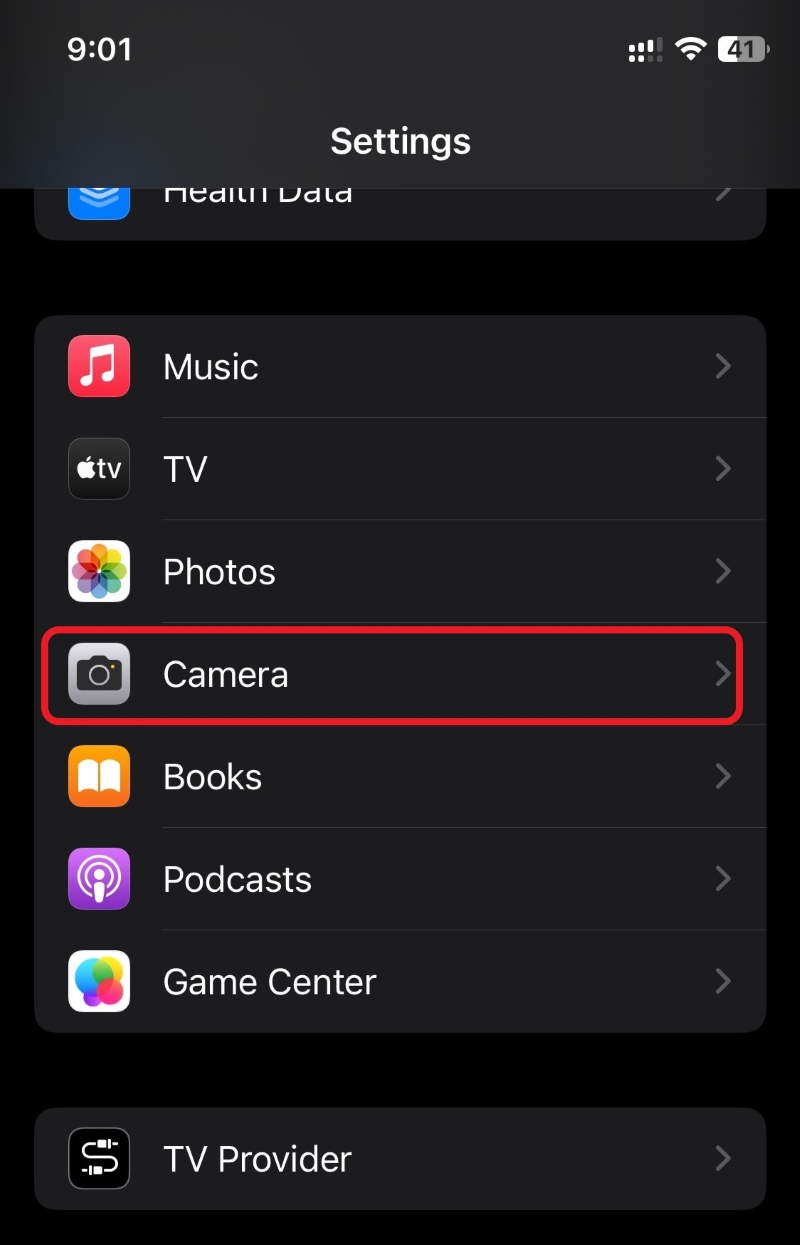
Step 3: Disable Smart HDR.
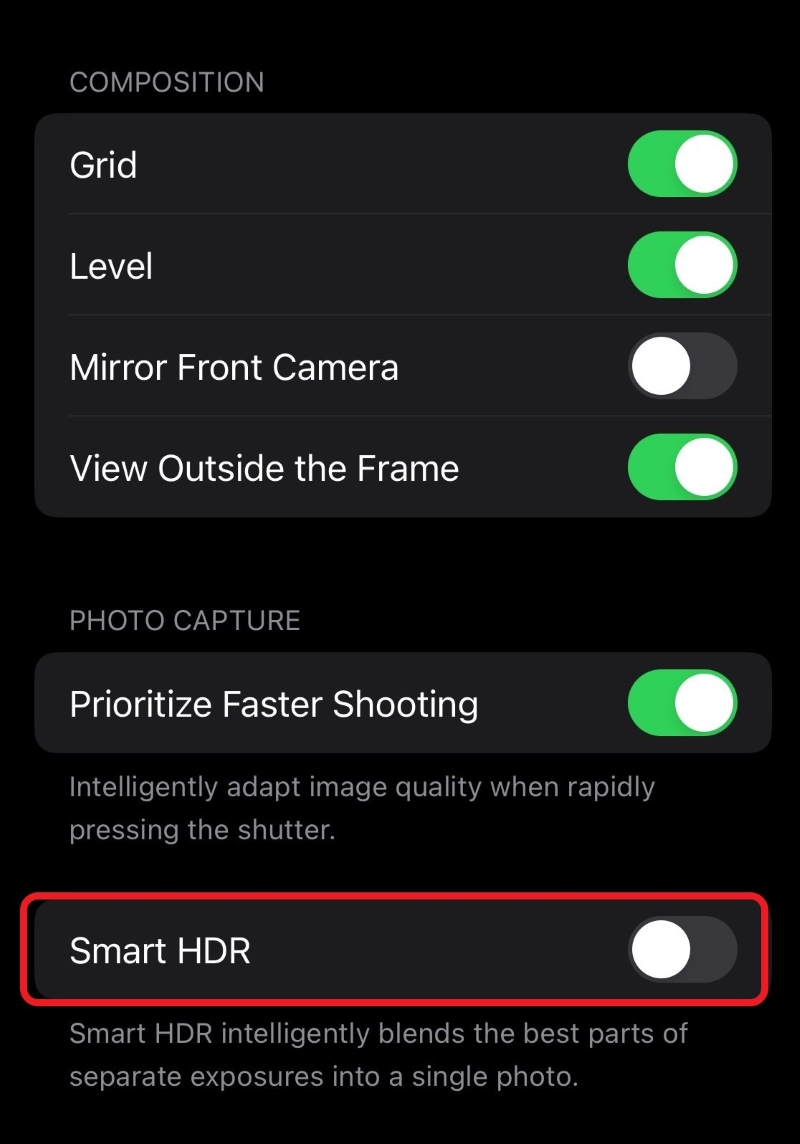
Step 4: Next, launch the camera app, and on the viewfinder, tap HDR to turn the setting on or off.
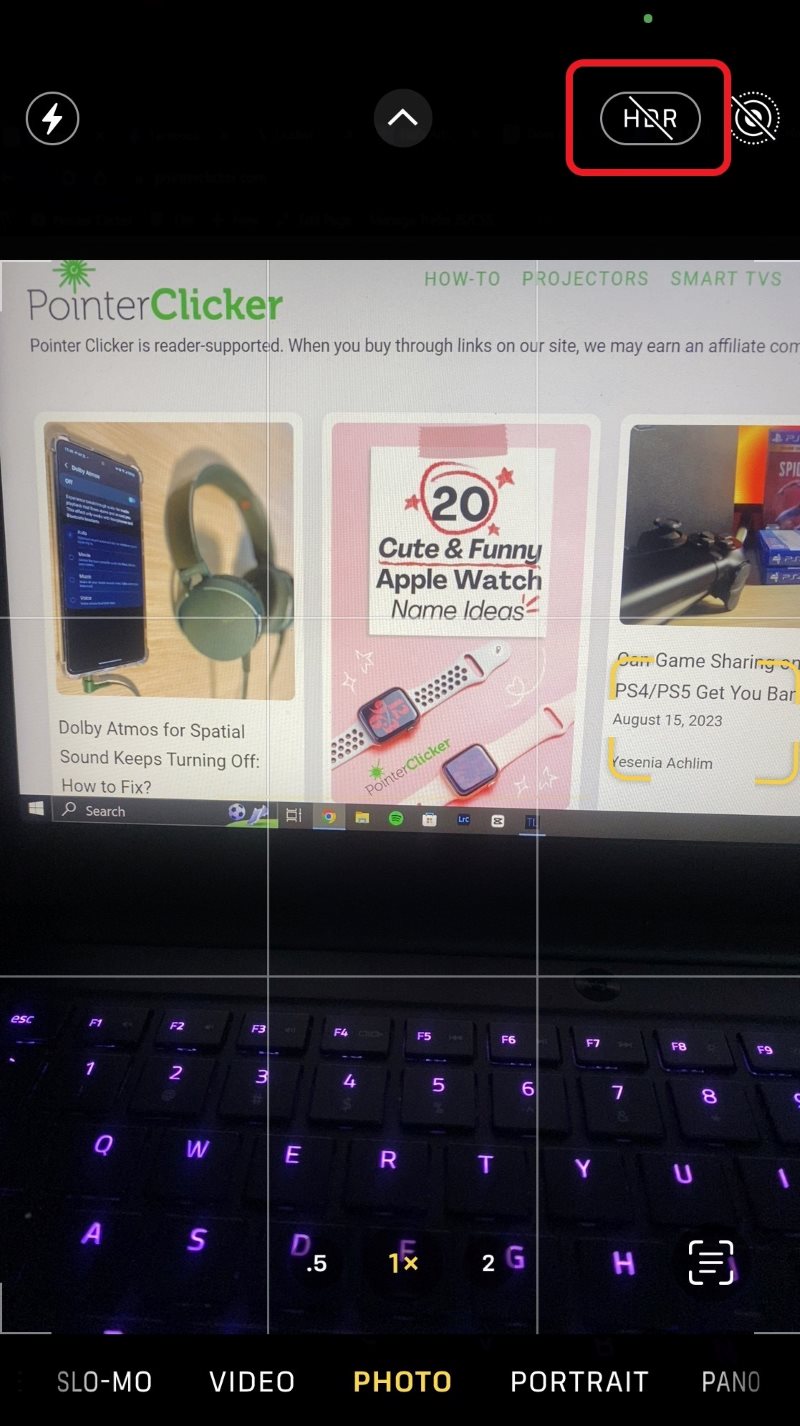
If you use an older iPhone, such as the iPhone 8/8 Plus or the iPhone X, the steps are similar to the above, except for one. Instead of turning off Smart HDR, you’ll have to disable Auto HDR.
iPad
The iPad’s camera handles HDR photos like the iPhone on the software level. For instance, it also turns on HDR when you click pictures.
But then some iPads let you turn off that functionality. To do so or manually control HDR, follow these steps:
Step 1: Head to Settings.
![]()
Step 2: Go to Camera.
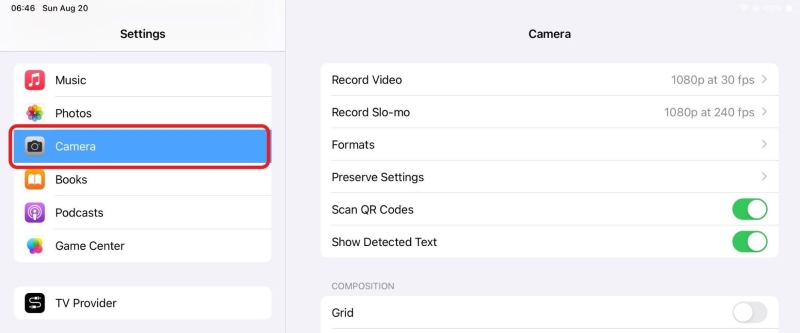
Step 3: Disable Smart HDR. If you don’t see the Smart HDR option, it means your iPad doesn’t support this feature.
The next time you turn on your iPad camera, manually turn off or on HDR in the camera app. Or, if the iPad is a tad older, tap the HDR text/logo on the screen to strike it on or off.
How to Turn On/Off HDR Video Recording on Your iPhone
Not just photos, the models in the iPhone 12, 13, and 14 series can shoot videos in Dolby Vision HDR for realistic color and contrast output.
Here are the steps to turn HDR video recording on/off on your iPhone:
Step 1: Head to Settings.
Step 2: Go to Camera.
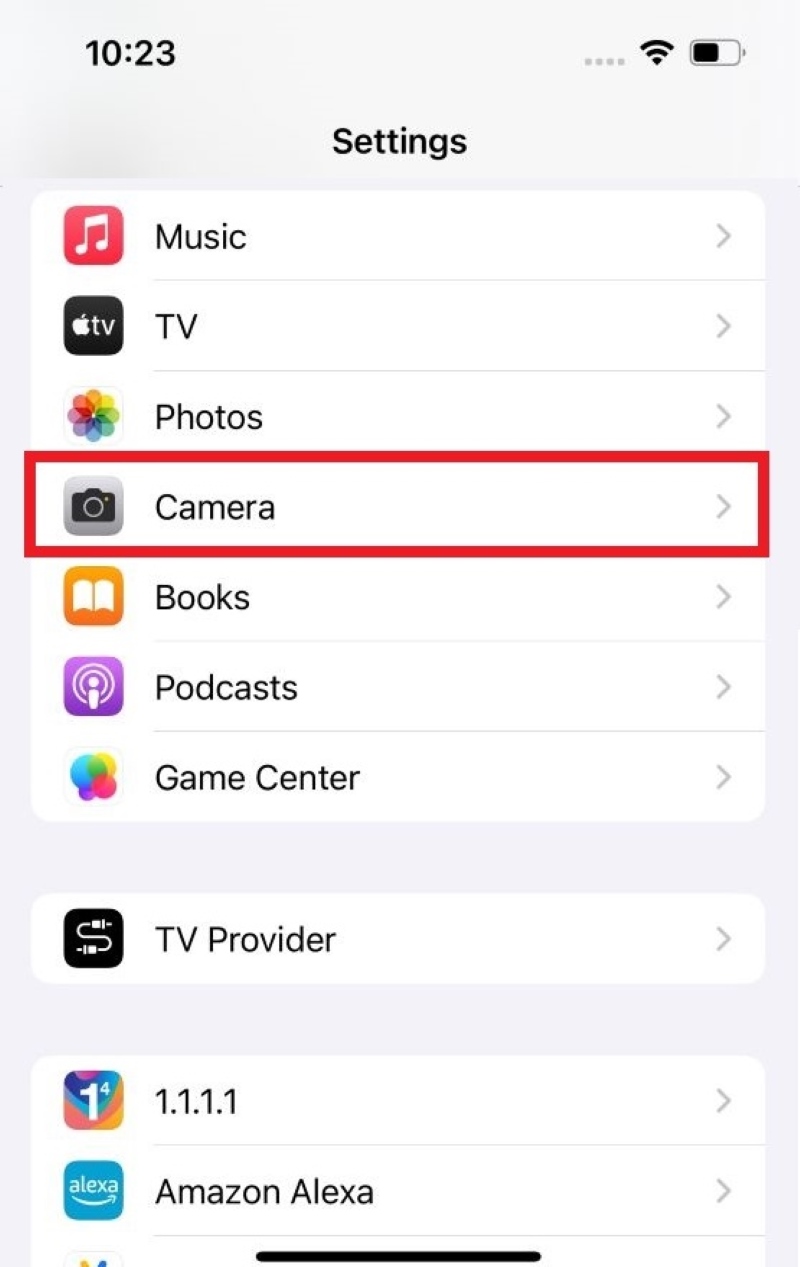
Step 3: Select the Record Video option.
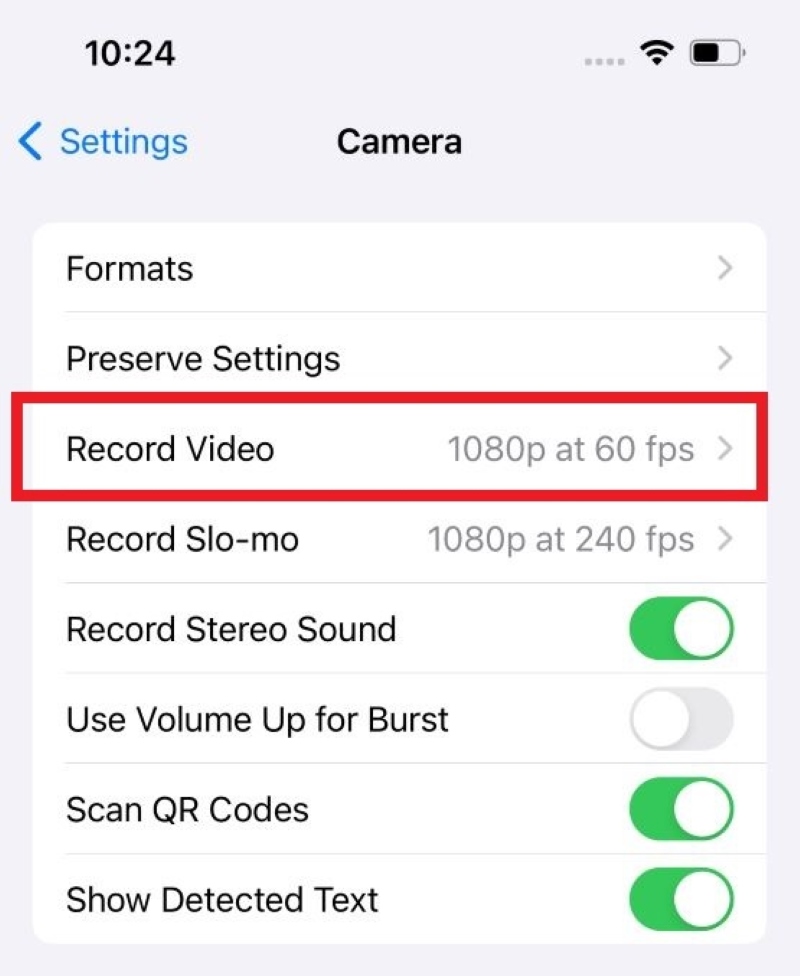
Step 4: Switch the HDR Video to OFF.
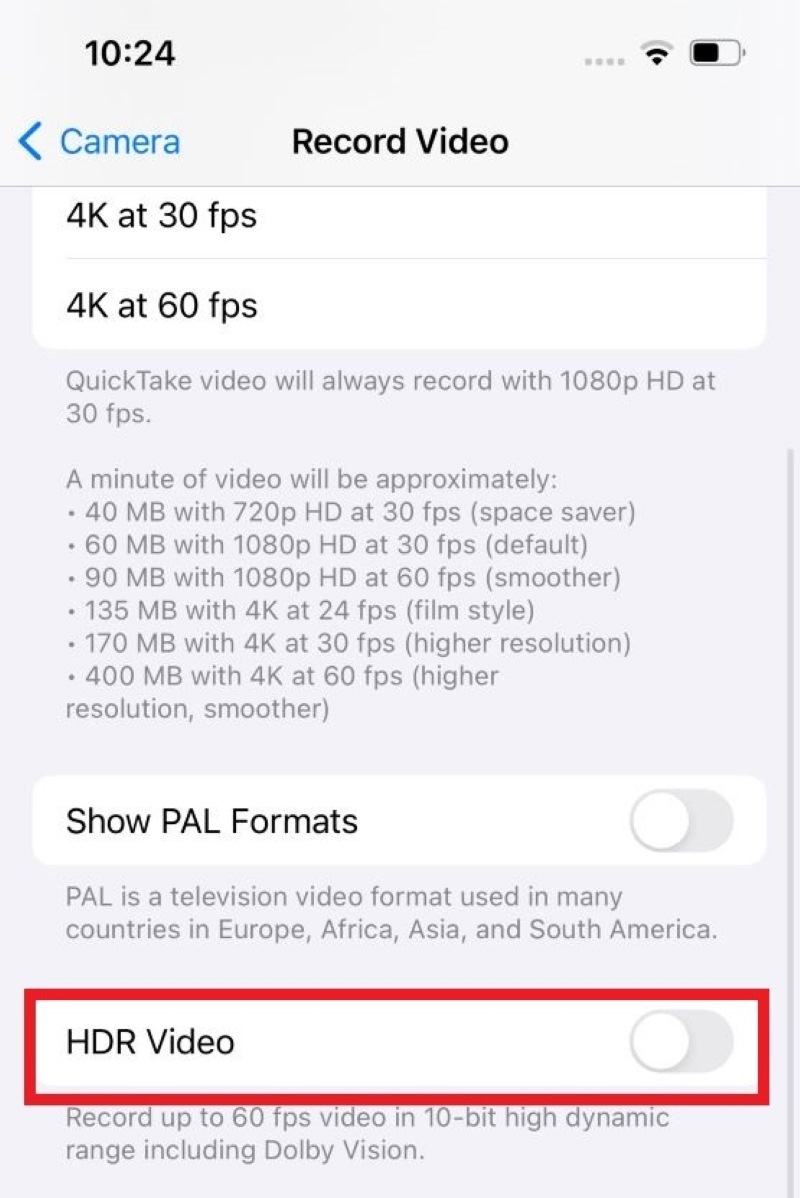
Note that, unlike in HDR photos, you cannot manually turn off or on HDR video from the camera interface.
How to Fix iPhone/iPad HDR Video Too Bright
Some Apple users have reported their HDR videos look too bright on their iPhones/iPads.
The primary cause for this concern is the particular iPhone or iPad needing to pack in the necessary hardware or support for HDR.
If you face this issue on your iPhone, try viewing the same HDR video on a relatively newer iPhone or one that supports HDR natively.
To ascertain whether your Apple tablet or phone supports HDR, kindly refer to the initial two sections of this piece.
FAQ
1. How Does HDR Content Look on a Non-HDR iPhone/iPad Display?
HDR content on a non-HDR iPad or iPhone screen will not be in its full visual glory. The colors won’t pop as much. The shadows and highlighted regions will look less detailed, causing an overall dip in visual quality.
Generally, HDR content playback on a non-HDR screen means seeing the regular non-HDR variant of the video.
But with the iPhone 8 and its non-HDR screen, for example, expect some visual improvements relating to contrast, colors, dynamic range, etc., when playing HDR 10 or Dolby Vision content on the device, thanks to a software technique called “dithering.”
Displays employing dithering leverage frame rate control-essentially quick cycling two consecutive hues to create the intermediate shade illusion.
In short, the iPhone 8, the 9th-gen iPad, or any Apple device with an 8-bit display can play back HDR content at a quality that sits between SDR and HDR.
2. What Is Smart HDR 3, Smart HDR 4?
Smart HDR is a computational photography feature on iPads and iPhones for capturing better HDR pictures. Smart HDR 3 and HDR 4 are versions of the tech.
Smart HDR 4 was launched with the iPhone 13. The algorithm ensured more vivid and detailed images than before.
Smart HDR 3 debuted with the iPhone 12. The algorithm removed certain artifacts that riddled prior versions of the tech, lending to more naturalistic photos.
The 6th-gen iPad Pro 12.9’s camera has Smart HDR 4. The 5th-gen iPad Air and 10th-gen iPad support Smart HDR 3.
Before Smart HDR 4 and 3, there was Auto HDR (iPhone X) and then Smart HDR (iPhone XS).
Smart HDR was unavailable on prior iPhones and iPads because they lacked the required camera functions and features (zero shutter lag, fast sensors, etc.).
Conclusion
Apple iPhones and iPads have always been known for their displays-be it LCD or OLED.
Even more revered are the cameras on these devices, particularly the iPhone. And with the adoption of HDR, iPhone and iPad’s photo shooting and video recording chops have only improved.
But HDR photos and videos may not be to everyone’s liking, especially when viewed on an older iPhone or iPad.
In such scenarios, it pays to know how to turn off the feature. Hopefully, this article showed you the ways.
Regarding viewing HDR content on an iPhone or iPad, there shouldn’t be an issue whatsoever. Even if you use an older iPhone or iPad, the HDR content will not be distressing or jarring to look at.
But, of course, the device must have a native HDR display to deliver the whole HDR experience.
In the rare cases when the videos look too bright or artifact-ridden, either don’t watch HDR content on the device or upgrade to new hardware.
Catherine Tramell has been covering technology as a freelance writer for over a decade. She has been writing for Pointer Clicker for over a year, further expanding her expertise as a tech columnist. Catherine likes spending time with her family and friends and her pastimes are reading books and news articles.

